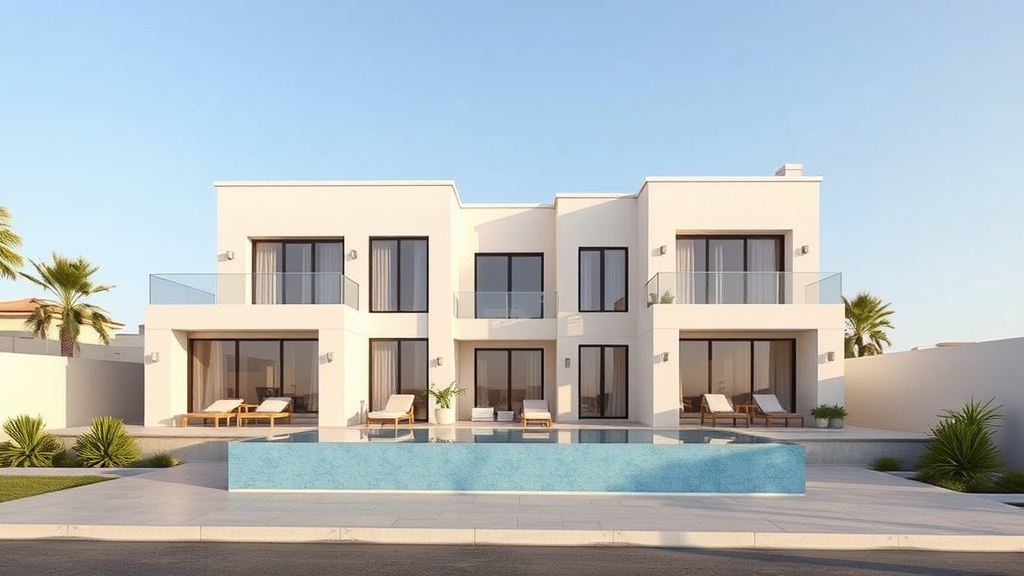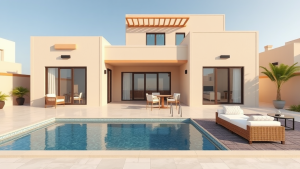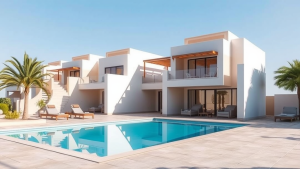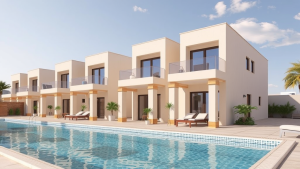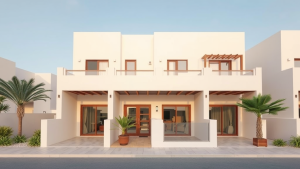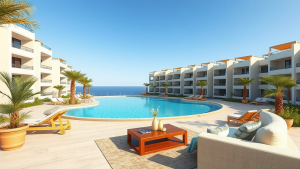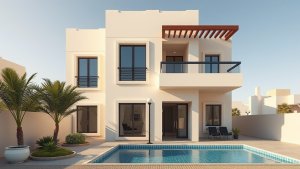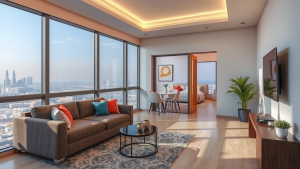Key accessible features retirees should consider when choosing budget homes
As you enter retirement, choosing a budget-friendly home that meets your needs is critical. One major aspect to consider is accessibility. You want to ensure that your living space will support your lifestyle as you age. Focusing on accessible features can significantly enhance your quality of life. Here are some key elements retirees should keep in mind.
Entryways and exits
When looking for a budget home, pay attention to the entry points. The front door should be wide enough to accommodate mobility aids like walkers or wheelchairs. A no-step entry is ideal, allowing you to avoid potential hazards. If a step is unavoidable, consider homes with gentle ramps or small steps that have handrails for added support.
Flooring options
Floors play a vital role in accessibility. Smooth, non-slip surfaces minimize the risk of falling. Avoid carpets, which can be hard to navigate and may cause tripping hazards. Instead, consider laminate or vinyl flooring, which is easier to get around. Ensure that transitions between different types of flooring are level and smooth.
Bathroom accessibility
The bathroom is often where accidents occur, making it crucial to select a home designed with safety features. Look for:
- Grab bars: These should be installed near the toilet and in the shower to enhance stability.
- Walk-in showers: They eliminate the risk of slipping or falling while stepping in and out of the tub.
- Higher toilets: Elevated models can be easier to access for those with mobility challenges.
Consider a bathroom with enough space for a wheelchair to turn around if necessary.
Kitchen layout
Your kitchen should be functional and easy to navigate. Look for the following features:
- Open space: An open-concept kitchen allows easy movement and access to different areas.
- Lower countertops: Adjustable height or lower surfaces can be beneficial for those who may need to sit while cooking.
- Pull-out shelves: These can reduce the need to bend down, making retrieving items easier.
Good lighting is also essential in the kitchen. Ensure there are plenty of bright, easily accessible lights to enhance visibility when cooking or preparing meals.
Larger doorways and hallways
Wider doorways can simplify movement throughout your home. They can accommodate wheelchairs or walkers with ease, avoiding frustration as you navigate your space. Aim for doorways that are at least 32 inches wide. Additionally, hallways should be spacious enough for easy passage, ideally over 36 inches wide.
Smart home technology
Consider incorporating smart technology into your budget home. Voice-activated systems can control lighting, heating, and even security features, enhancing your independence. Smart devices can provide reminders for medications or schedules, keeping you on track without the need for extra assistance.
Outdoor accessibility
If you enjoy the outdoors, ensuring your yard is accessible is vital. Look for homes with:
- Flat or gently sloped yard: This minimizes physical strain when moving around.
- Accessible patios: A comfortable outdoor space can be a relaxing retreat.
Consider low-maintenance landscaping that doesn’t require extensive upkeep, allowing you to enjoy your outdoor space without added stress.
Community features
Consider the surrounding community when choosing your budget home. Look for neighborhoods with:
- Nearby amenities: Having grocery stores, pharmacies, and healthcare facilities close by is a huge plus.
- Public transportation: Access to public transport can be beneficial if you need to travel into town or visit friends.
A supportive community can provide a sense of belonging and help you maintain an active lifestyle.
By focusing on these accessible features, you can find a budget home that not only meets your financial needs but also allows you to enjoy your retirement fully. Take the time to evaluate each option carefully, ensuring that your new home enhances your daily life as you age.
The importance of budgeting for future accessibility needs in retirement housing
As you approach retirement, finding a home that fits your lifestyle and future needs becomes essential. Budgeting for accessibility features in your retirement housing is a crucial step many overlook. Investing in accessible features can make your home more comfortable and safe as you age. Understanding the importance of budgeting for these needs can save you time, money, and inconvenience later.
Home modifications can range from minor adjustments to major renovations. However, it’s not just about transforming your current living space. It’s about planning for your future health and mobility needs. Features such as wider doorways, ramps, and grab bars are often seen as essentials for seniors, but they can also be costly if addressed last minute. Forward-thinking budgeting ensures that these features are not afterthoughts but integral parts of your new home.
Here are several key points to consider when planning your budget for future accessibility needs:
- Assess Your Current Needs: Understand your current and potential health issues. Are you dealing with mobility challenges or vision impairments? Take a realistic inventory of what modifications you may need now and in the coming years.
- Prioritize Essential Features: Consider which features are most important to you. Items like non-slip flooring, lever-style door handles, and comfortable bathroom setups can significantly enhance your daily living experience.
- Research Costs: Familiarize yourself with the costs associated with accessible features. Whether buying a new home or renovating, having a clear estimate will help you plan your finances better.
- Seek Professional Help: Consult with specialists such as occupational therapists or contractors who focus on home accessibility. They can provide insightful advice and may point out features you hadn’t thought of.
- Look for Grants and Assistance Programs: Many states and local governments offer financial aid to help with home modifications for seniors. Take advantage of these programs to ease the financial burden.
In budgeting for your future accessibility needs, consider not only the physical attributes of your home but also how they will impact your quality of life. A home that meets accessibility standards will allow you to maintain independence longer and can enhance your overall well-being. For instance, having a no-step entrance can make it easier to invite family and friends over without worrying about falls or difficulty in entry.
Also, factor in the potential resale value of your home. Homes that are equipped with accessible features can attract a broader range of buyers, including those with disabilities or families looking for multi-generational living options. This can be an increasingly valuable asset in today’s market.
When considering buying a budget home, accessibility may not just mean physical modifications. It can also relate to the location of the home. Proximity to healthcare facilities, grocery stores, and public transport options can have a significant impact on your lifestyle. Thus, integrating these aspects into your budget can lead to long-term satisfaction.
One common mistake many retirees make is underestimating the costs of maintenance and repairs. Accessible features might require regular upkeep or adjustments. Make sure your budget accounts for ongoing expenses related to keeping these features functional and safe.
Ultimately, careful budgeting for future accessibility needs is an investment in your peace of mind. Planning ahead minimizes stress down the line and helps ensure that your retirement years are enjoyable and fulfilling. Not only will you be comfortable in your home, but you’ll also have the freedom to live life on your terms.
As you navigate the journey to retirement housing, remember that the choices you make today will shape your future living conditions. Building a budget that accommodates your accessibility needs is not just savvy; it’s essential. You deserve a home that adapts with you, keeping you safe, independent, and happy for years to come. Taking these considerations into account will empower you to make informed decisions tailored to your needs.
Finding a budget home that meets your accessibility needs is crucial for a comfortable and secure retirement. As you consider your options, keep in mind the key accessible features that will make daily living easier, such as single-story layouts, wide doorways, lever-style door handles, and grab bars in bathrooms. These elements not only enhance your safety but also promote independence as you age.
Addressing accessibility in your housing choice isn’t just about the present; it’s also about planning for the future. As you budget for your retirement living expenses, take into account potential modifications that may be necessary down the line. This forward-thinking approach can save you both time and money and ensure that your home remains adaptable to your needs.
Balancing affordability with accessibility may seem challenging, but with careful research and planning, you can find a home that supports your lifestyle today while preparing for tomorrow. Remember, your home should be a place of comfort and joy—a sanctuary where you can enjoy your retirement years fully. Prioritize accessibility in your budget home to create the ideal living environment for yourself and your loved ones. Embracing these aspects will empower you to lead a fulfilling life, surrounded by the comforts of a well-designed and accessible space.

